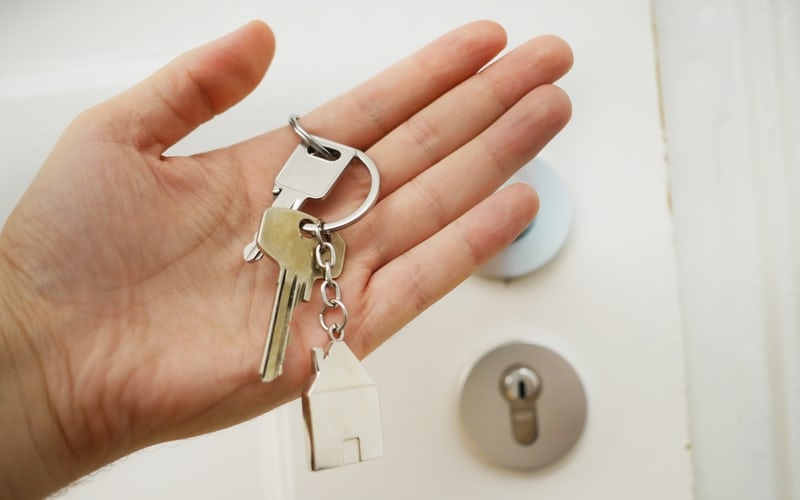According to new research, reducing the mortgage serviceability buffer from 3% to 2.5% would allow Australian homebuyers to borrow 5% more.
For someone on an average wage, that works out to be an extra $18,816.65 in borrowing power.
The research, commissioned by the Finance Brokers Association of Australia (FBAA), suggested a lower buffer could enable nearly 270,000 more people to access median home loans.
It found an extra 68,721 people aged between 25 and 34 would be able to buy property valued between $700,000 and $800,000 (assuming a 20% deposit).
In the final days before the 3 May election, Peter Dutton and the opposition will likely draw Australian voters' attention towards these numbers, given a lower buffer is among their pre-election promises.
The buffer has been at 3% since October 2021, but Shadow Housing Minister Michael Sukkar said last month the Coalition intends to lower it if elected, although he didn't say to what extent.
"[The current buffer] is not good regulation. It's a barrier to aspiration," he said.
However, the above report also acknowledged that without "careful balance", a corresponding increase in property prices could offset the improved access to housing.
What does a lower buffer mean?
The serviceability buffer is how lenders 'stress test' home loan applications.
The current 3% buffer means a borrower applying for a loan at 6% p.a. would need to be able to pay it off at 9% p.a. in order to be approved.
It's undeniably an important responsible lending safeguard, but many now feel the current rules have become overly restrictive given interest rates are at a decade high.
For example, some borrowers that have seen their repayments go up dramatically over the past couple of years now find themselves unable to refinance to a lower rate because of the buffer.
The buffer is set by the Australian Prudential Regulation Authority (APRA), so a Coalition Government wouldn't actually be able to immediately change it.
Mr Sukkar says the plan is instead to reform APRA, requiring it to "consider the impact of its rules on access to housing".
Will it improve affordability?
Mr Sukkar was the latest in a series of prominent voices to suggest the buffer needs to come down.
James Austin, CFO of non-bank lender Firstmac, told the Savings Tip Jar podcast last year a 2% buffer would be "more realistic" while in November a Senate inquiry recommended reducing the current buffer.
More recently, Mortgage & Finance Association of Australia CEO Anja Pannek said on episode 101 of the podcast that the buffer needs to be flexible and fit for purpose.
However, APRA has so far held firm, with Chairman John Lonsdale calling high household debt a "key vulnerability if adverse economic scenarios came to pass."
The Global Financial Crisis of 2008 is the definitive cautionary tale for what can come of irresponsible lending, and Labor and the Greens both argued against changes to the buffer last year.
"If we remove or even reduce this buffer, it will land a lot more first home buyers in hot water when unexpected circumstances arise," Greens Senator Barbara Pocock said in November.
As well as the extra default risk, a lower buffer could also push up house prices by increasing demand, which some politicians and economists argue would negate any positives.
FBAA Managing Director Peter White acknowledged this possibility, but still believes a lower buffer would make a "massive difference" to the housing market.
"The bottom line is that this is a very effective way to help hundreds of thousands of people enter the market and remain in the market."
He highlighted the freedom from "mortgage prison" that these changes could mean for trapped borrowers.
"[A reduced buffer] may ease loan stress among current mortgage holders... as more are freed up to refinance [to a lower rate]," he said.
Already some banks have introduced lower buffers for refinancers in good financial standing with their bank; since the adjustments nearly two years ago, exceptions to the buffer have more than doubled in value.
In his recent appearance on the Savings Tip Jar podcast, Peter Tulip, chief economist at the Centre for Independent Studies, went beyond calling for a lower buffer - he suggested doing away with the system altogether.
"APRA has no business and no real interest in intervening to stop a loan that the buyer and lender mutually agree on," he told the podcast.
He called the buffer overly paternalistic.
"If someone wants to take on a very high mortgage, then if they understand the sacrifices that involves and the risks that involves, that should be their decision."
Picture from Paddy Pohlod on Unsplash

Ready, Set, Buy!
Learn everything you need to know about buying property – from choosing the right property and home loan, to the purchasing process, tips to save money and more!
With bonus Q&A sheet and Crossword!



 Harry O'Sullivan
Harry O'Sullivan

 Denise Raward
Denise Raward
 Brooke Cooper
Brooke Cooper
 William Jolly
William Jolly

